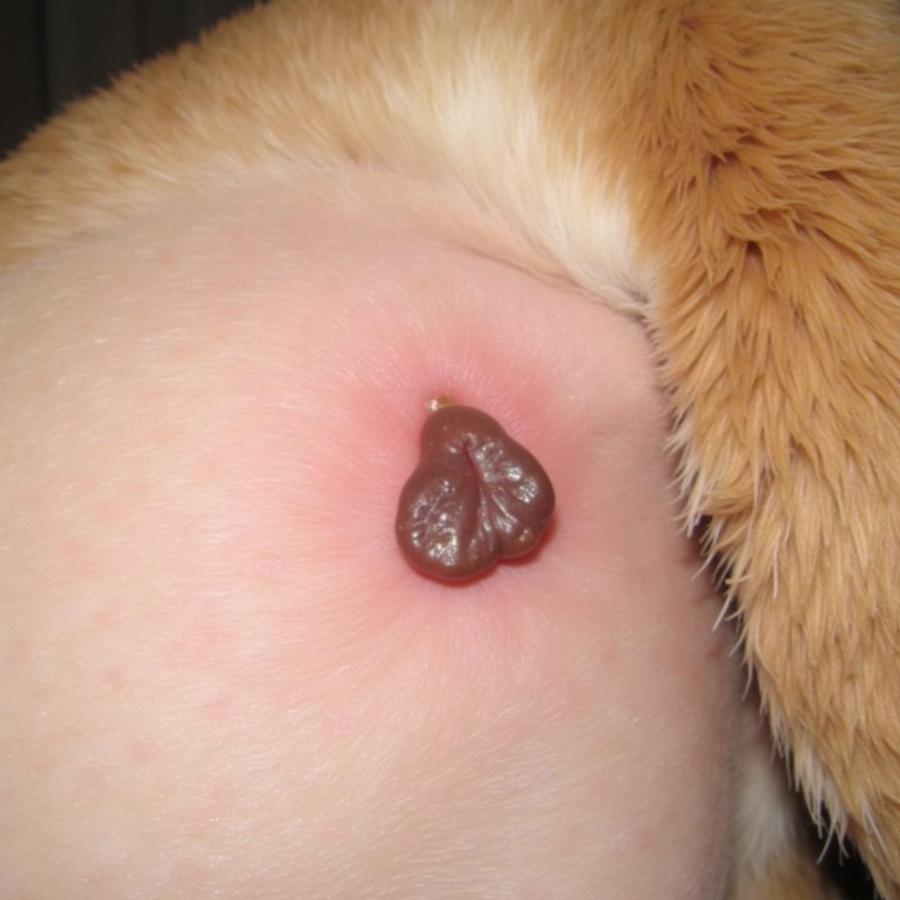Skin tag growth on dogs is a common occurrence, often causing concern for owners. These small, fleshy growths are typically benign and don’t require treatment. However, understanding what they are, why they occur, and when to seek veterinary attention is crucial for responsible pet ownership. This article will delve into the details of skin tags in dogs, providing you with the knowledge to differentiate between harmless skin tags and potentially problematic growths.
What Are Skin Tags on Dogs?
Skin tags, also known as acrochordons, are small, benign tumors of the skin. They often appear as soft, fleshy, pedunculated (stalk-like) growths and can vary in size and color. They are commonly found in areas where the skin rubs against itself, such as the armpits, groin, neck, and eyelids. While they can occur in any breed, they are more frequently seen in older dogs and certain breeds, like Cocker Spaniels.
Causes of Skin Tag Growth on Dogs
While the exact cause of skin tag growth isn’t always clear, several factors are believed to contribute. Genetics, friction, and hormonal imbalances are often cited as potential causes. Older dogs are more prone to developing skin tags, suggesting that age plays a role. Additionally, obese dogs may experience more skin folds and friction, which could increase their likelihood of developing skin tags.
When to Worry About Skin Tags on Dogs
Most skin tags are harmless and don’t require treatment. However, there are certain situations where you should seek veterinary attention. If a skin tag becomes irritated, bleeds, or changes in size, shape, or color, it’s important to have it examined by a veterinarian. This is crucial to rule out other more serious skin conditions, such as mast cell tumors or warts.
 Identifying a Dog Skin Tag
Identifying a Dog Skin Tag
Diagnosing Skin Tag Growth on Dogs
A veterinarian will typically diagnose a skin tag through a physical examination. In some cases, they may recommend a fine-needle aspiration or biopsy to confirm the diagnosis and rule out other skin conditions. This involves taking a small sample of cells from the growth and examining it under a microscope.
Treatment Options for Skin Tag Growth on Dogs
In most cases, skin tags do not require treatment. However, if a skin tag is causing discomfort or irritation, or if it’s located in an area where it’s prone to being caught or injured, surgical removal may be recommended. This is a relatively simple procedure that can be performed under local anesthesia. can dogs have skin tags
Preventing Skin Tag Growth on Dogs
While you can’t entirely prevent skin tags, maintaining a healthy weight for your dog can help minimize skin folds and friction, potentially reducing the risk. Regular grooming can also help identify any skin changes early on. recommended dog food for cocker spaniels
Are Skin Tags Painful for Dogs?
Typically, skin tags are not painful unless they become irritated, infected, or are located in an area where they are constantly being rubbed or pulled.
What does a skin tag on a dog look like?
Skin tags often appear as small, fleshy growths that hang off the skin. They can be smooth or slightly bumpy and vary in color from pink to brown.
How can I tell if a growth on my dog is a skin tag?
While this article provides valuable information, it’s important to consult with a veterinarian for a proper diagnosis. Only a vet can definitively determine if a growth is a skin tag or something else. small mix breed dogs
Conclusion
Skin tag growth on dogs is a common issue, typically benign and not cause for alarm. However, monitoring any changes in size, shape, color, or if there’s bleeding or irritation, is vital. Consult with your veterinarian for any concerns, ensuring prompt and appropriate action for your furry friend’s well-being. Remember, regular veterinary checkups are crucial for maintaining your dog’s overall health and identifying potential issues early. best dry food for small dogs
FAQ
- Are skin tags contagious? No, skin tags are not contagious to other animals or humans.
- Can I remove a skin tag myself? No, it is not recommended to attempt to remove a skin tag yourself. This should only be done by a veterinarian.
- Do skin tags grow back after removal? It is uncommon for skin tags to grow back after surgical removal.
- Are skin tags more common in certain breeds? Yes, some breeds, like Cocker Spaniels, are more prone to developing skin tags.
- Can diet affect skin tag growth? While not a direct cause, a balanced diet contributes to overall skin health and may indirectly influence skin tag development.
- Are there any home remedies for skin tags? No, there are no proven effective home remedies for skin tags. Consult a vet for appropriate treatment.
- Can puppies get skin tags? While more common in older dogs, puppies can also develop skin tags.
Further Reading
- Understanding Dog Skin Conditions
- Common Canine Health Issues
- Senior Dog Care Tips
Beaut Dogs is your trusted source for all things canine, providing reliable and in-depth information on dog breeds, care, health, and more. From understanding your dog’s unique needs to providing practical advice on training and nutrition, Beaut Dogs is dedicated to enhancing the bond between you and your furry companion. mobile dog grooming okc When you need expert advice, reach out to us at [email protected] (Email address) and let Beaut Dogs provide you with the detailed and accurate answers you’re seeking.